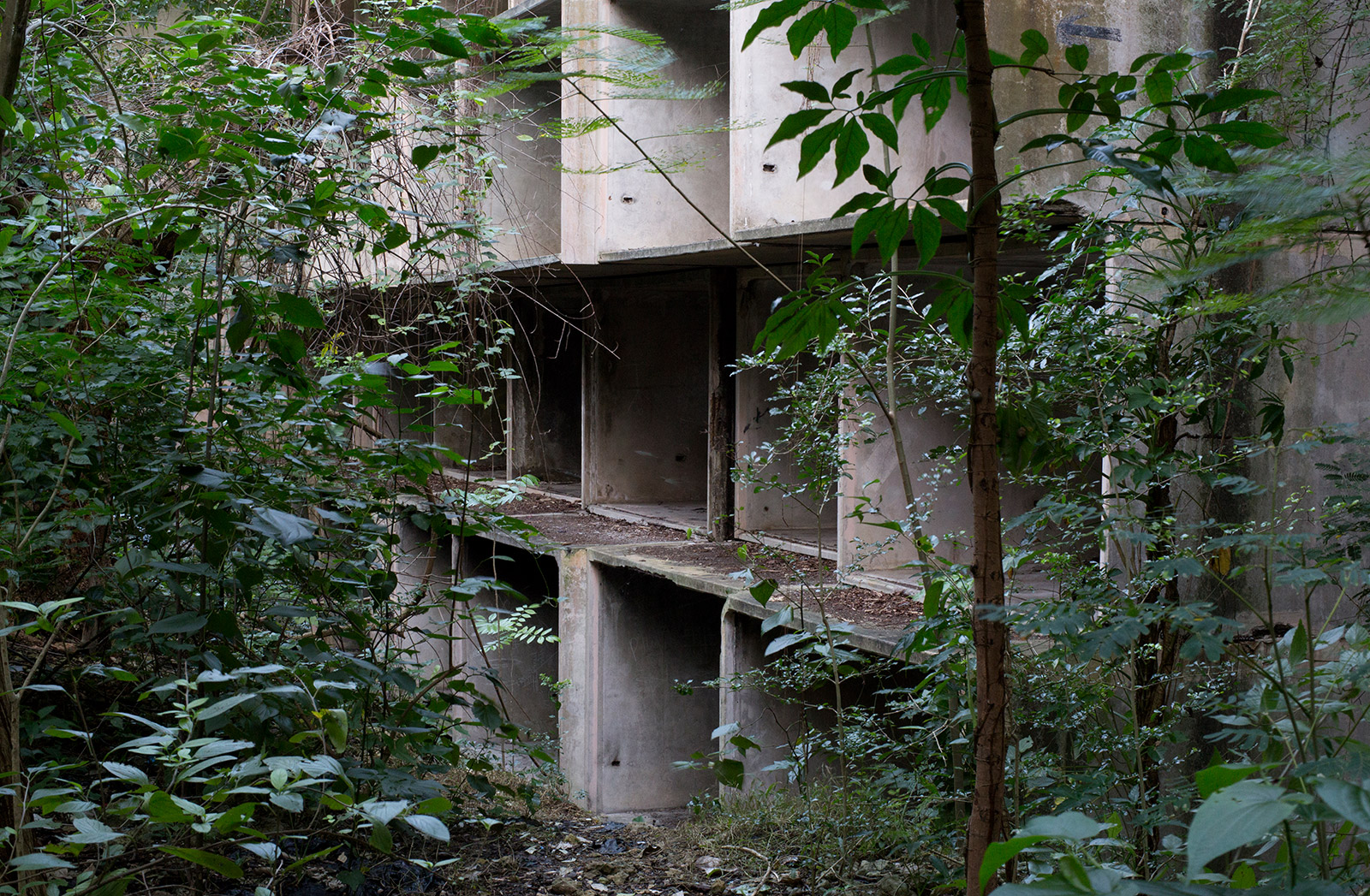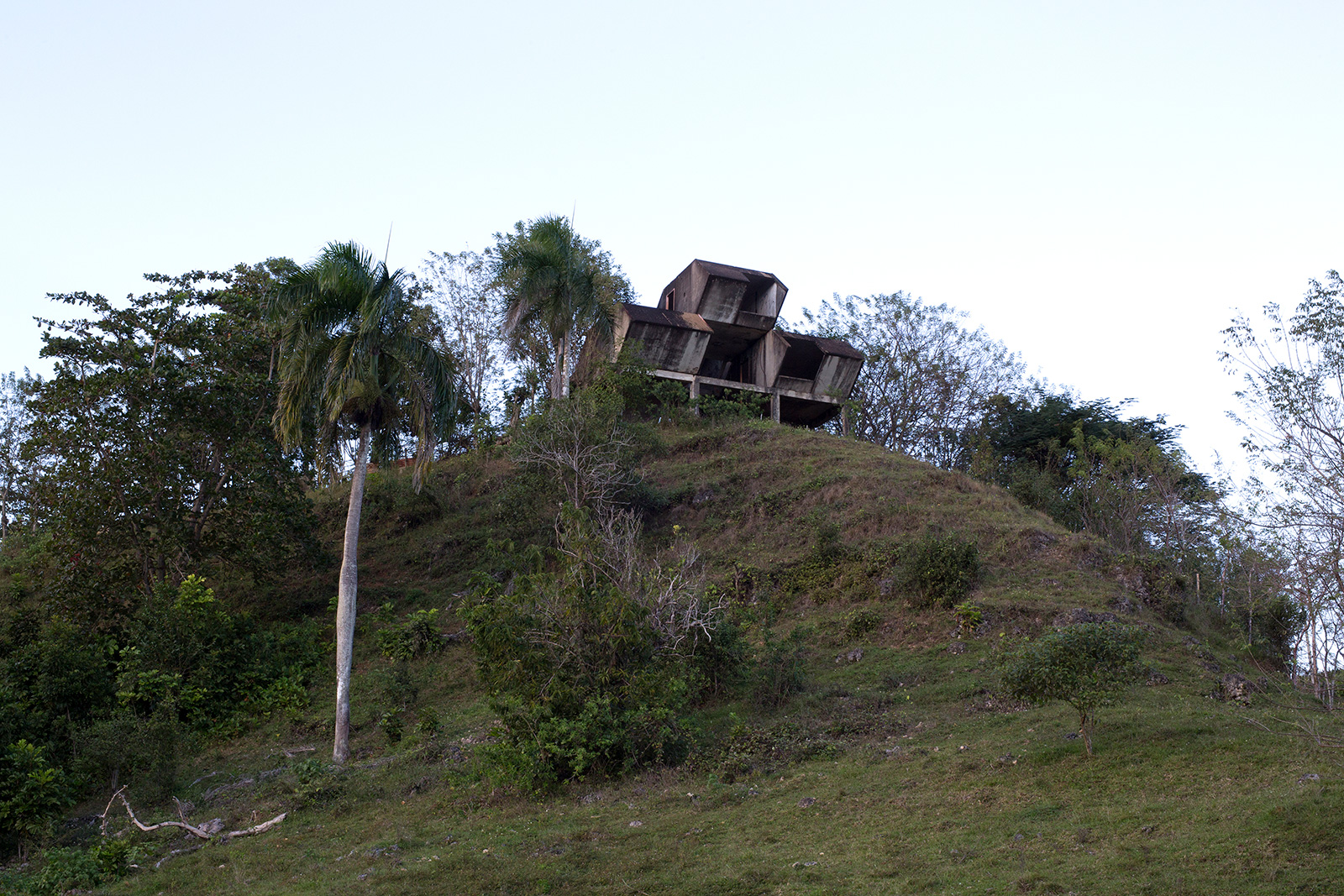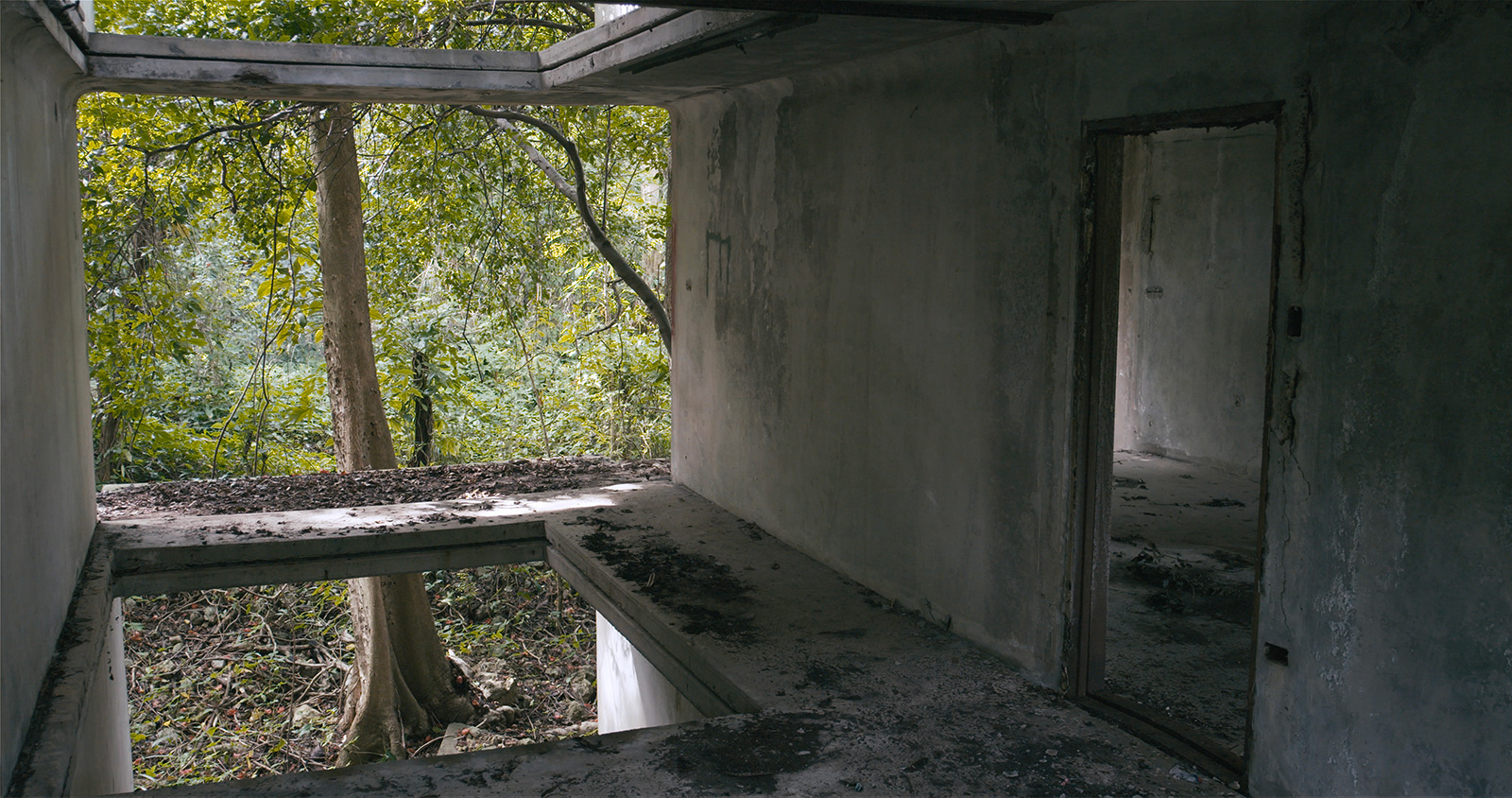
Moshe Safdie is the ‘king of concrete utopias’ – his Habitat ’67 in Montreal representing the pinnacle of 1960s futurism with its stacked concrete capsules.
But it’s one of Safdie’s unfinished projects which plays a starring-role in artist David Hartt’s new three-part exhibition at the Graham Foundation in Chicago. In the forest documents Safdie’s abandoned 1968 Habitat Puerto Rico, whose concrete structures are being reclaimed by nature.
Hartt’s exhibition borrows its name from a chapter of Claude Lévi-Strauss book, Tristes Tropiques. Using film, photography and sculpture, the Montreal-born artist interrogates the relationship between architecture, ideology and the natural environment.

David Hartt, still from In The Forest, 2017. Courtesy of Corbett vs. Dempsey and commissioned by the Graham Foundation for Advanced Studies in the Fine Arts

David Hartt, still from In The Forest, 2017. Courtesy of Corbett vs. Dempsey and commissioned by the Graham Foundation for Advanced Studies in the Fine Arts

David Hartt, still from In The Forest, 2017. Courtesy of Corbett vs. Dempsey and commissioned by the Graham Foundation for Advanced Studies in the Fine Arts

David Hartt, still from In The Forest, 2017. Courtesy of Corbett vs. Dempsey and commissioned by the Graham Foundation for Advanced Studies in the Fine Arts

David Hartt, still from In The Forest, 2017. Courtesy of Corbett vs. Dempsey and commissioned by the Graham Foundation for Advanced Studies in the Fine Arts

David Hartt, still from In The Forest, 2017. Courtesy of Corbett vs. Dempsey and commissioned by the Graham Foundation for Advanced Studies in the Fine Arts
Says Hartt: ‘Safdie’s always been an important architect in terms of “utopian spirits”, and the promise of Modernism to create a better quality of life for all. His book For Everyone a Garden is something I always return to as a counterpoint to a lot of initiatives in that period.’
Habitat Puerto Rico was begun just a year after the success of the Expo ‘67 World Fair to provide 800 low-cost homes on a sloping, 20-acre site in the Hato Rey neighbourhood of San Juan. These stacked volumes were each to have a private garden and views of the city – a new vision for low-income community living.

This first site was soon abandoned, and a second was found for the project in San Juan’s Carolina district, where construction began. A small number of modules were also built on remote sites around the island. But funding was pulled in 1973 after just 30 units had been constructed, leaving Safdie’s concrete utopia a ruin.
Almost 50 years on, Hartt’s film sets up a dialogue between these decaying remnants, and the project that failed to emerge, recontextualising Habitat Puerto Rico within the country’s economic and political present.
‘I’m not interested in the nostalgia for a future that didn’t happen,’ says Hartt. ‘The work is much more critical analysis of what’s present. It’s a testament to the values of Neoliberalism.’
Hartt has layered video footage of the sites with field recordings and a soundtrack composed by musician Karl Fousek in the film – previewed in the special cut.
The Carolina site is the densest in terms of Safdie’s built structures, with concrete skeletons engulfed in greenery. ‘As soon as you step off the curb into that forested area you’re surrounded by the sound of the forest. Traffic fades into the distance and the noise of the insects and birds comes to the fore.’

He adds: ‘You get a sense of something from a different period of time, in a different part of the world. Its connection to that suburban context is entirely erased by the nature that surrounds it.’
In the forest runs from 14 September until 6 January 2018 at The Graham Foundation’s Madlener House, and coincides with the Chicago Architecture Biennale.
Read next: Artist Richard Woods dots a British seaside town with cartoon tiny homes

















